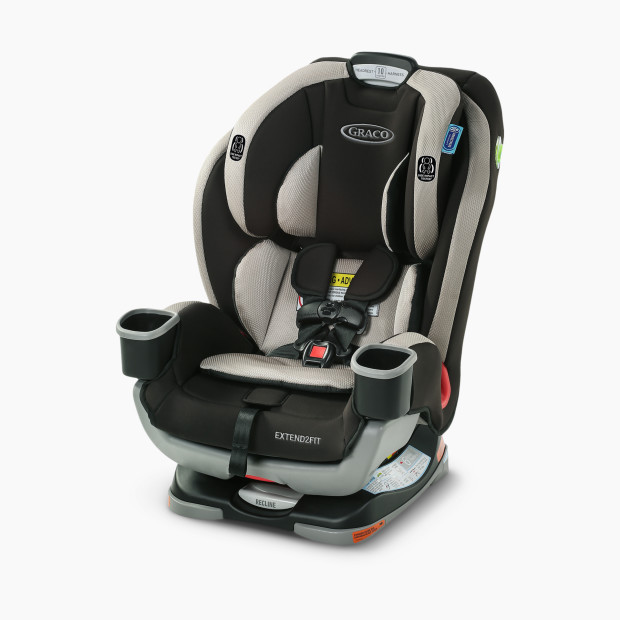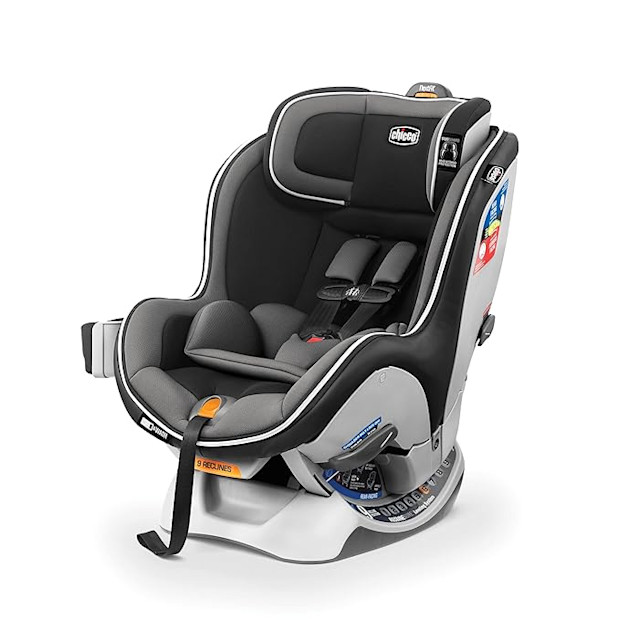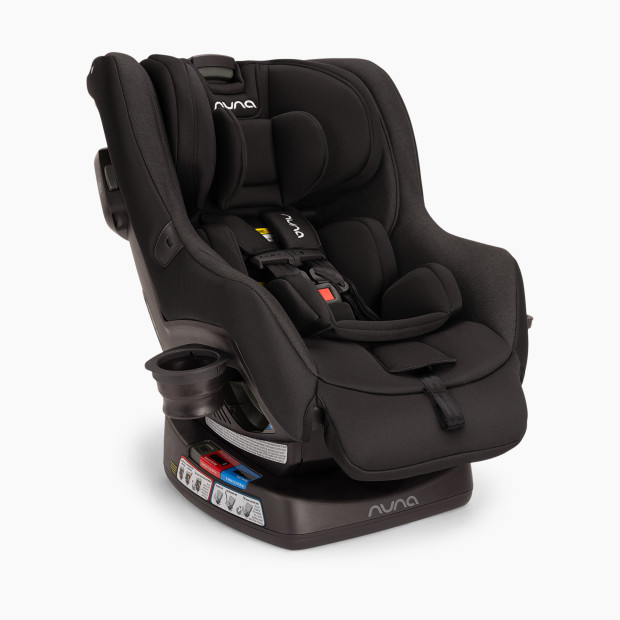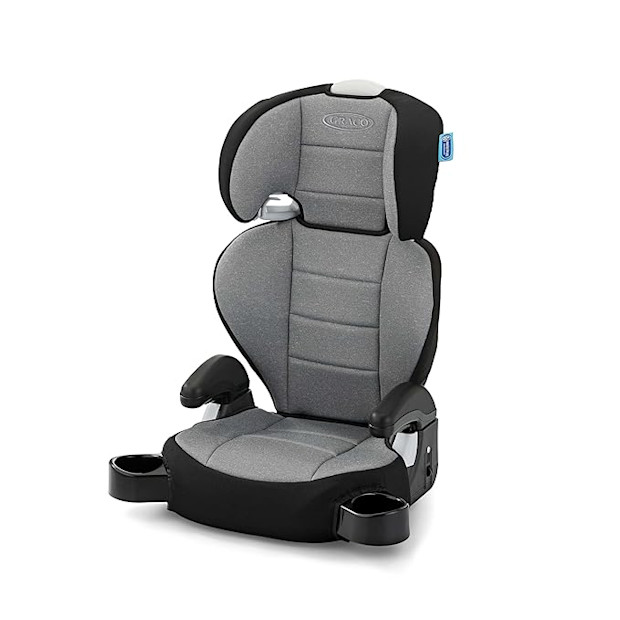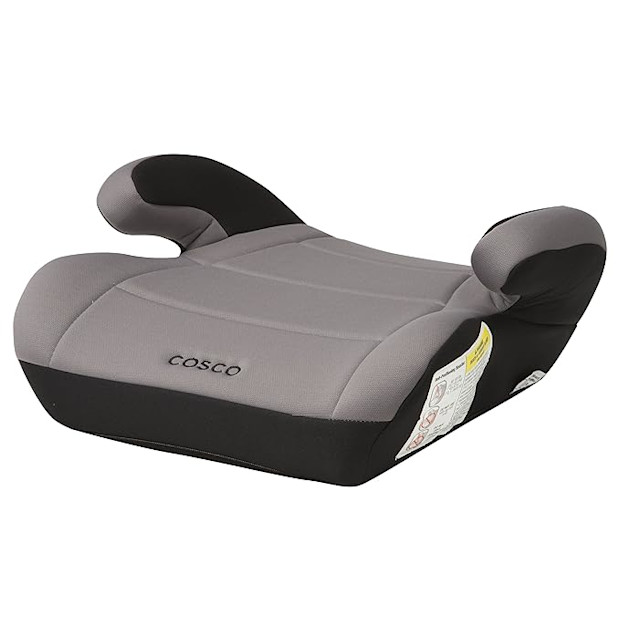Switching Car Seats Too Soon Is a Common Mistake—Here’s When to Do It
As a car seat educator, I see many parents make the move too early. Here’s how to get it right.
Much of parenting is watching the milestones tick by: watching your baby learn to crawl, take their first steps or say their first words. And while it may not be something you jot down in the baby book, car seats have milestones, too. The infant seat you may have spent months researching actually has a fairly short life; most babies outgrow theirs in about a year, making it the first in a long line of car seats you’ll use over the next decade.
“The most common mistake I see parents make with car seats is going to the next stage too soon,” explains Rebekah Kimminau, a Child Passenger Safety technician (CPST) and founder of The Baby Gear Consultant. And as a CPST myself, I see the same trend. Like with any other milestone, parents are eager to see their child level up—but that often means they end up in a car seat that either doesn’t fit correctly or isn’t the best choice for their particular age and stage. Knowing when to make the switch will keep your little one as safe as possible each time you head out.
In This Article
Car Seat Basics: What You Need to Know
There’s a car seat for every age and stage of your child’s life. Before you can figure out when to level up your seat, getting your head around the car seat landscape—and at what age and stage you’ll use each particular seat—will help you choose the best option from the start.
Most parents start with an infant car seat—a seat made specifically for younger babies. Infant car seats always face the rear of the vehicle, and almost all attach to a base. (The base stays installed in your car and the seat clicks in and out for convenience and portability.)
After an infant seat, it’s time to move up to a convertible car seat. Convertibles, as their name implies, convert from a rear to a forward-facing seat. Unlike infant seats, convertible car seats don’t attach to a base—instead, they use your vehicle’s seat belt or LATCH system for installation. Convertible car seats also include rotating car seats (seats that spin 180 or 360 degrees to make loading and unloading easier) and all-in-one seats (seats that transform from rear- to forward-facing and ultimately to boosters).
A booster seat is the final car seat milestone before you can move on to using just your vehicle’s seat and seat belt. Boosters use your vehicle’s seat belt as a restraint. A booster seat elevates a child to achieve a proper seat belt fit. There are two types of booster seats: high-back boosters (a seat with a bottom and a back) and backless (just the seat component).
Most parents kick off their car seat journey with an infant seat. That’s because infant car seats are convenient; you can get your baby in and out of the car without disturbing them or pop the seat right into a compatible stroller, making a travel system.
However, you can start with a convertible car seat if you prefer. Just know that convertible seats aren’t designed for portability. They’re bulky, heavy and are intended to be installed in a vehicle and left there. And, convertible car seats aren’t compatible with strollers, so you need to be sure the stroller you choose is newborn-friendly (this often means it reclines completely flat)—otherwise you won’t be able to stroll until your baby can sit independently, usually around six months.
When to Switch From an Infant Car Seat to a Convertible Car Seat
Making the switch from an infant car seat to a convertible is often the first car seat swap parents encounter.
You can keep your child in their infant car seat until they outgrow the seat either by height or weight restrictions.
“Or is the key word to remember here,” explains Kimminau. “It means that even if your little one meets the seat’s weight requirement but is over the height requirement, it’s time to make the switch, and vice versa.” You can make the switch earlier, but be sure you do it by the time one of these maximums is met.
Most kids will outgrow their infant car seat by height before weight. “Many infant seats are being marketed to hold children up to two years old because of higher weight limits (35 pounds),” says Kimminau. “But most children will outgrow their infant seats by height long before they reach the weight limit.”
You’ll also need to pay attention to how your child’s head fits in the seat’s shell. “A good rule of thumb for most seats is that if the top of the child’s head is within one inch of the top of the shell of the seat, it’s time to transition,” she says. An easy way to check this is to find a board book that is one inch thick and place it on top of your child’s head while they are properly secured in the seat.
Most parents swap to a convertible car seat around the one-year mark, but when you make the switch should depend on your child’s height and weight and the specifics of your particular car seat.
Infant to Convertible Cheat Sheet
- You can keep your child in an infant car seat until they outgrow the seat either by height or weight maximums—whichever comes first.
- Many seats also require an inch of room between the top of the shell and the top of a child’s head.
- Most children outgrow their infant seat by height before weight, and usually around one year old.
Convertible Car Seats We Recommend
When to Switch from Rear-Facing to Forward-Facing in a Convertible Car Seat
Most families use a convertible car seat for several years, and sometimes even longer if the seat is an all-in-one style that’s designed to grow with a child. But at some point, you’ll need to turn your convertible car seat from rear- to forward-facing.
A child should remain rear-facing until they reach the top rear-facing height or weight limit allowed by the car seat’s manufacturer.
That’s because rear-facing is the best way to keep your child safe. Rear-facing seats are designed to support the head and neck of a child in a crash. (The head, neck and spinal cord of an infant are the most vulnerable parts of their body.) A rear-facing seat allows crash forces to spread across the shell of the car seat, reducing the risk of injury.
But what if your child looks squished riding rear-facing? As kids grow, many parents worry if their child needs to bend their legs in their rear-facing car seat, thinking it’s either uncomfortable for them or unsafe in the event of a crash—but neither is true. Even if your child’s legs reach the back of your vehicle’s seat or they need to sit cross-legged, they should remain rear-facing for as long as the seat allows. Children riding forward-facing are more likely to experience leg injuries than rear-facing, according to the American Academy of Pediatrics Child Passenger Safety data.
The majority of convertible car seats in the US have a 40-pound rear-facing weight limit. (Height limits vary, but are also important because most children hit the height maximum before the weight maximum.) “Even with a 40-pound rear-facing limit, most children can stay rear-facing until they are three or four,” says Kimminau. “And more and more seats offer rear-facing limits to 50 pounds, allowing you to rear-face even longer.” Also keep in mind that many states now have laws requiring parents and caregivers to rear-face until at least two years old.
Rear- to Forward-Facing Cheat Sheet
- Max out the rear-facing limits of your convertible car seat whenever possible.
- Many states require children to ride rear-facing until at least two years old.
When to Switch From a Convertible Car Seat to a Booster Seat
The next level-up you’ll face is the convertible to booster switch. This is a big progression that isn’t as black and white as the infant to convertible transition.
The best time to move your child from a harnessed car seat to booster seat is when they’ve maxed out the limits of their forward-facing seat, meet the height and weight requirements of a booster seat and are mature enough to sit properly.
This means that along with monitoring your child’s height, weight and age—what parents generally pay the most attention to when selecting a car seat—you’ll also need to take developmental level into consideration.
“Each child may be ready to move to a booster seat at different times depending on their maturity,” explains Kimminau. That’s because boosters offer much more freedom of movement than harnessed car seats. And if a child isn’t ready to sit properly with just a seat belt—no leaning, slouching or messing around—then they’ll need more time in their harnessed seat before they’re booster-ready.
Still unsure about when to make the switch? Car Seats for the Littles, a car seat safety group staffed by CPSTs, recommends that to ride in a booster, a child should:
Be at least five years old.
Meet the minimum height and weight requirements of your booster seat.
Be able to sit properly 100% of the time, even when asleep.
Have a proper seat belt fit.
High-back boosters vs. backless boosters
There are two types of boosters, high-back and backless. High-back boosters have a seat and a back; some also have a seat belt guide to keep the lap belt in the correct position on a child’s hips. Backless boosters have only a seat.
When you’re first making the convertible-to-booster switch, many experts recommend starting with a high-back booster. “A high back booster can provide a bit more of a controlled environment,” explains Kimminau, because the shoulder belt guide helps to position the seat belt properly. “Some parents may also use a high-back booster during road trips and long car rides because the headrest will help keep your child in the proper position even when they fall asleep.”
Convertible Car Seat to Booster Seat Cheat Sheet
- Always max out the limits of the forward-facing seat.
- Meet the height and weight requirements of your booster seat.
- Child should be at least five years old AND mature enough to sit properly 100% of the time.
Booster Seats We Recommend
When to Switch From a Booster Seat to a Seat Belt
After years of car seats and boosters, most parents can’t wait to leave them behind for the ease of just a seat belt. But not so fast—this is another big transition that you shouldn’t take on too early.
It’s safe to transition your child to the vehicle seat and seat belt when they pass what’s called “the five-step test.” A child must meet all five of these steps to use a seat belt safely.
Knees bent comfortably at the edge of the seat with their feet flat on the floor.
Back against the vehicle seat without slouching.
Lap belt low on the hips, across the upper thighs.
Shoulder belt crossing the collar bone.
Child can stay seated properly for the entire ride.
“This test ensures that the vehicle seat belt correctly fits the child and will protect them in the event of a crash. If your child does not pass the five-step test, they should remain in a properly fitting booster seat.”
Booster to Seat Belt Cheat Sheet
- Pass the five-step test.
- Be mature enough to sit properly the entire ride.
Jen LaBracio,
Senior Gear Editor, CPST
Jen LaBracio is Babylist’s Senior Gear Editor and a Child Passenger Safety Technician (CPST). When she’s not geeking out over car seats, testing out a new high chair or pushing the latest stroller model around her neighborhood, she likes to run, do all things Peloton, listen to podcasts, read and spend time at the beach. In her past life, she worked for over a decade in children’s publishing. She lives outside of Chicago with her husband and their two boys, Will and Ben.


